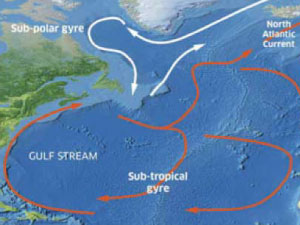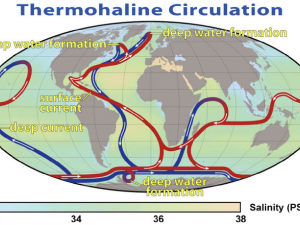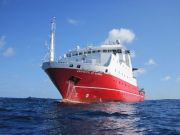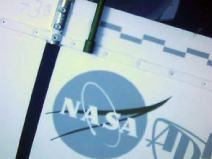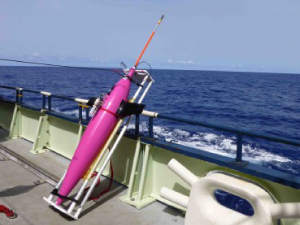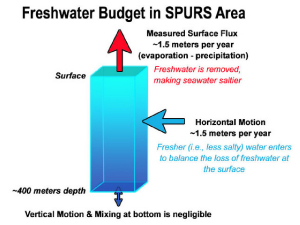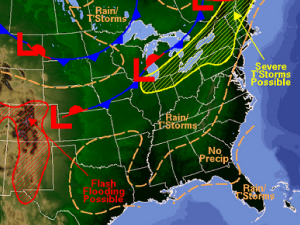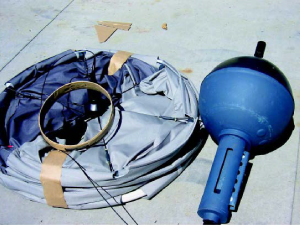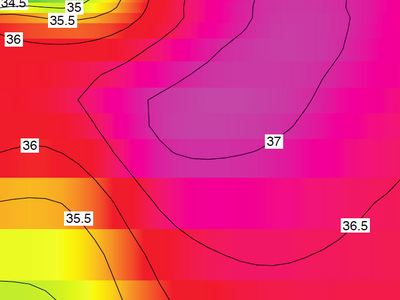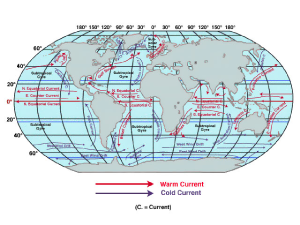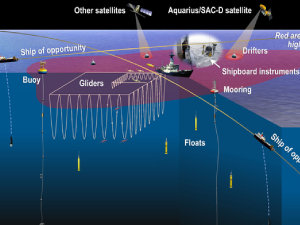Education: Go With the Flow
Ocean water moves through a combination of winds, currents, and the rotation of the earth. Many in-water oceanographic instruments make use of these interactions to propel themselves through the ocean, collecting data at the surface, at depth, and everywhere in between. Studying how water flowing through ocean basins allows scientists to observe and make predictions about larger patterns of ocean circulation.
In this clip, Julius Busecke discusses how the interactions between atmospheric circulation and the rotation of the earth interact to produce large scale gyres in the North Atlantic Ocean.
Dr. Susan Lozier explains how changes in ocean circulation are the result of not only changes in seawater density, but also the amount of wind blowing on the surface of the ocean to push the water around.
In this clip, Julius Busecke, a Ph.D student at the Lamont Doherty Earth Observatory, explains how these rainfall patterns create tropical and desert regions.
Dr. Fred Bingham describes how a new type of float - called a Lagrangian float - is used for at-sea salinty research.
There are surface drifters and wave gliders, so what constitutes a seaglider? Dr. Fred Bingham tells us in this clip, and shares how these drifters helped researchers to better understand the SPURS region.
In this clip, Dr. Tom Farrar describes his research with surface seawater fluxes and what it means to create a salinity "budget" for the SPURS study site.
In this clip, Ph.D student Julius Busecke explains that through his research, he is trying to determine how freshwater is carried throughout the ocean and how mesoscale eddies in the ocean are affecting properties like ocean salinity.
As part of the SPURS study, 40 surface drifters were deployed to measure salinity and other variables. Dr. Fred Bingham explains their ability to move through the ocean autonomously, and what information that they can provide researchers.
In this clip, Ph.D student Julius Busecke explains shallow overturning circulation and uses the North Atlantic Ocean, home of SPURS, as a case study. He also gives viewers a glimpse at some preliminary results gleaned from a recent cruise to the SPURS.
Ted Taylor, a high school earth sciences teacher at Bangor High School, walks through a concept map aimed at presenting ways he has incorporated ocean science topics into his classroom.
The process of studying the ocean has changed dramatically since the first ocean explorers set out on ships. Dr. Eric Lindstrom explains that modern-day oceanographers are using new technology to create a "sensor web" to study ocean interactions - changing the face of oceanography.
